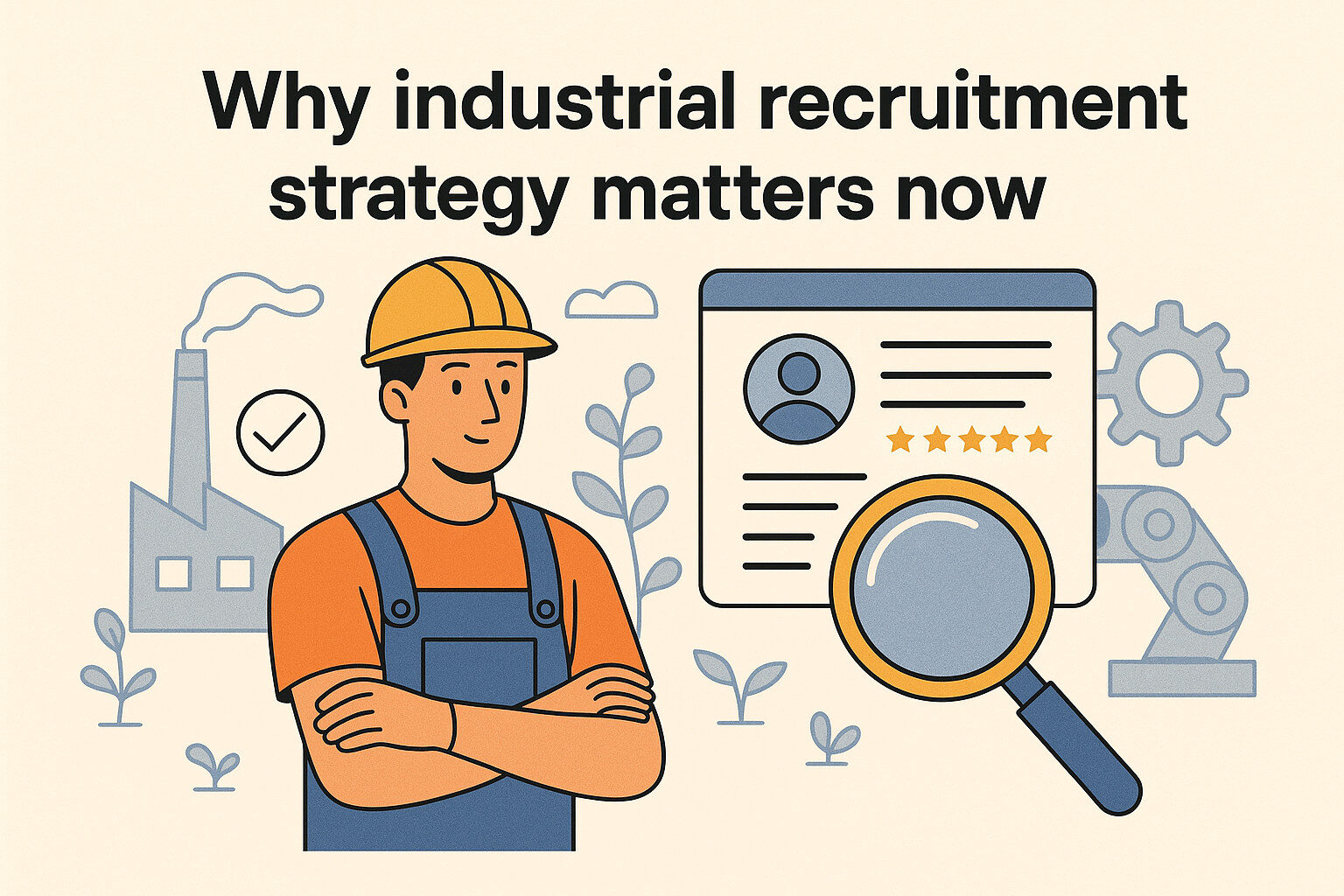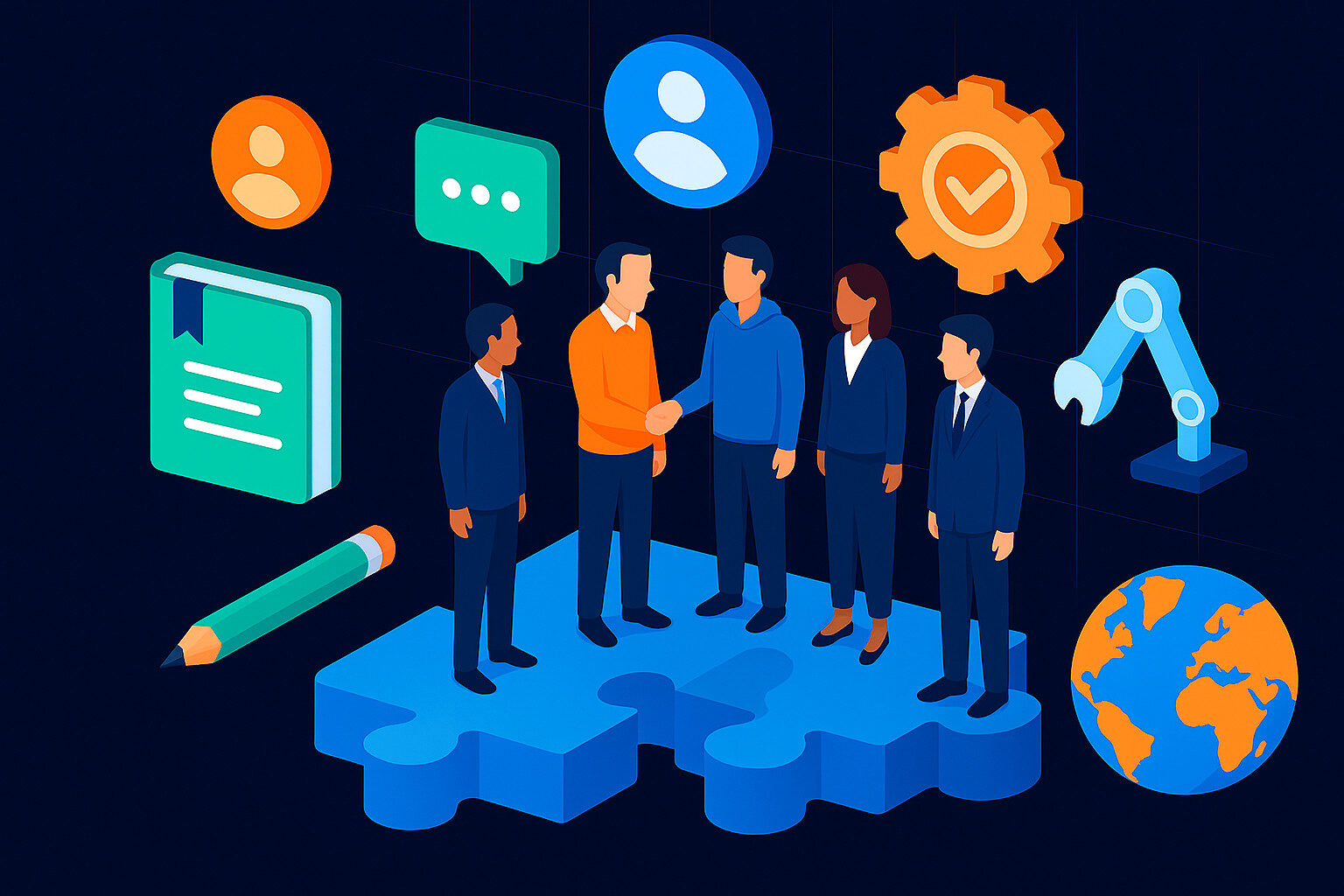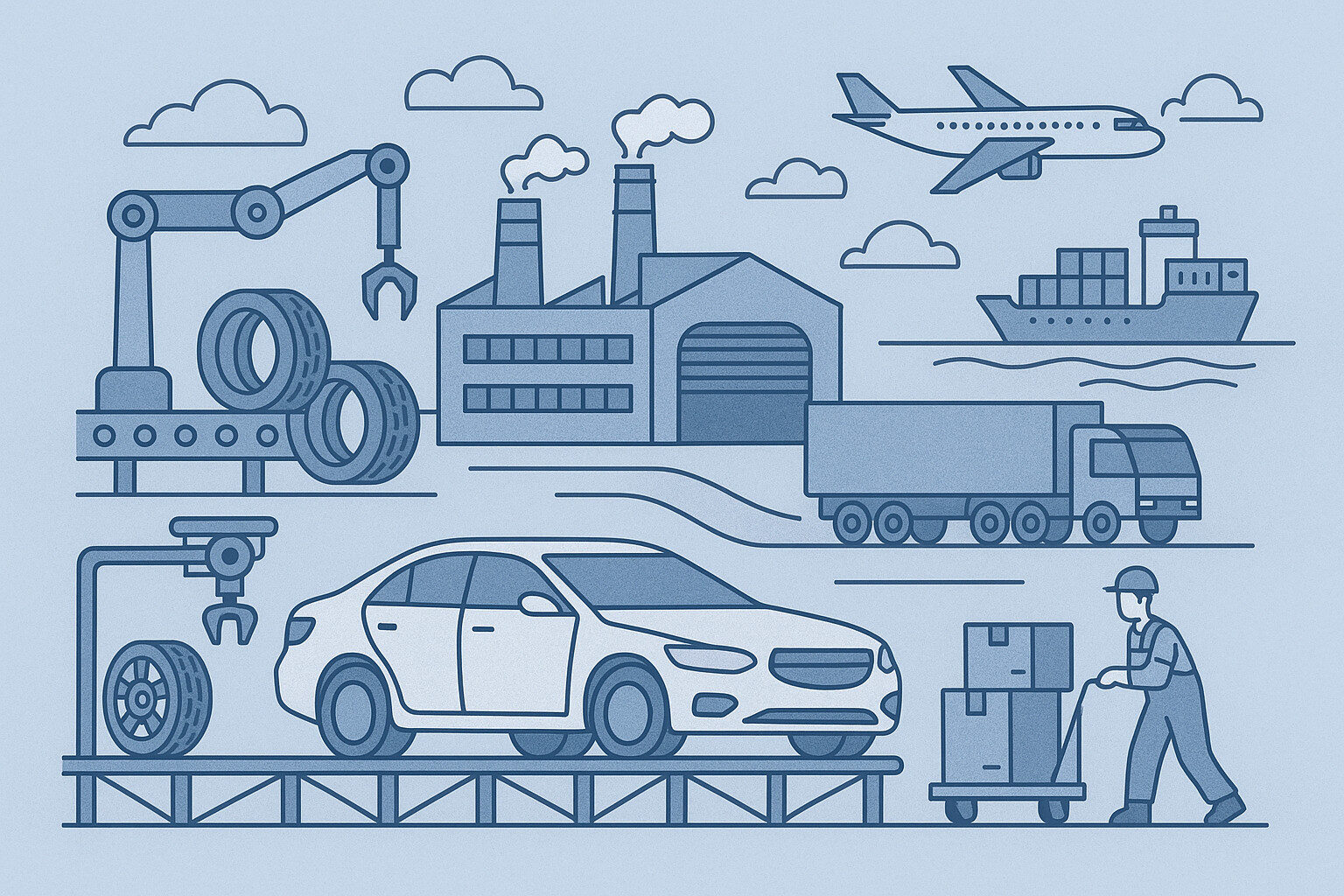In today’s fast-moving labour market, having a robust industrial recruitment strategy 2026 is no longer optional it’s essential. With emerging technologies, shifting workforce expectations and rapidly changing industrial job profiles, organizations must proactively design hiring processes that not only fill roles, but drive long-term workforce resilience, quality of hire and operational competitive advantage. This guide will walk you through the key components of building an industrial recruitment strategy in 2026, backed by data, practical steps and actionable insights so that you and your recruitment team feel your time was well-spent.

Why industrial recruitment strategy matters now
In the industrial sector manufacturing, logistics, maintenance, assembly, skilled trades the stakes are high. Unfilled roles, skills mismatches or high turnover can cost millions in lost productivity, quality issues and delayed throughput. According to a recent U.S. forecast, the economy is projected to add roughly 5.2 million jobs between 2024 and 2034, but this growth comes with new challenges of workforce planning, skills gaps and evolving job functions.
For industrial recruitment, this means:
- Traditional role definitions are shifting (e.g., more automation, data‐driven tasks).
- Skills-based hiring is overtaking rigid credential sets.
- Candidate experience, employer brand and recruitment analytics are more important than ever.
Therefore, a strategic approach is required one that aligns with business goals, responds to labour market trends, and integrates technology and human factors effectively.
Steps for Your Industrial Recruitment Strategy 2026
Here is a systematic approach you can apply to build your strategy:
1. Define your Objectives & Business Alignment
Start by linking your recruitment goals to your broader operational and business objectives. For example:
- Will you be scaling up production lines, opening new sites or integrating new technologies (e.g., robotics, IIoT)?
- What are your quality, turnaround, uptime and safety targets for the next 12-24 months?
- What labour market realities (e.g., availability of skills, wage inflation, union issues) must you account for?
By aligning recruitment to business drivers, your talent acquisition becomes a strategic enabler not just a reactive function.
2. Conduct a Demand & Skills Gap Analysis
Next, perform a detailed audit:
- What roles will you need (skilled trades, machine operators, maintenance, supervisors, digital/automation roles)?
- What skills are required (traditional industrial skills + digital literacy, ability to work alongside automation, data‐interpretation, troubleshooting)?
For example: one forecast shows that light industrial and manufacturing jobs are splitting into “traditional vs high-tech” roles. - What is the current internal capability and pipeline? What is your attrition rate, time‐to-fill, cost‐per-hire?
- How long will it take to onboard and ramp new hires to full productivity?
3. Design Sourcing, Screening & Assessment Strategy
This is where you translate your objectives and gap-analysis into concrete recruitment levers:
Sourcing
- Go beyond traditional job boards: partner with technical schools, trade associations, community colleges, apprenticeship programmes.
- Consider talent pools with transferable skills (e.g., military veterans, second-career professionals) where you can train on industrial-specific tasks.
- Leverage employer branding: industrial roles may not always “pop” as sexy jobs so showcase growth paths, technology, safety culture, upskilling.
- Use data/analytics to identify effective channels and continuously optimise sourcing spend.
Screening & Assessment
- Implement skills-based hiring: many organizations are moving away from rigid degree requirements and focusing on demonstrated ability.
- Utilize practical assessments: working with machinery, digital dashboards, simulations of maintenance tasks, mechanical aptitude tests.
- Leverage recruitment analytics: dashboards with time-to-fill, quality-of-hire, retention metrics. As one article states: “Recruiting leaders will rely less on intuition and more on data-driven hiring KPIs”.
- Ensure your screening process is human-centric: while automation and AI help, maintaining the human touch reduces candidate drop-off and improves experience.
4. Candidate Experience & Onboarding
The best recruitment strategy fails if new hires churn quickly or take too long to ramp up.
Candidate experience
- Speak to the industrial workforce’s expectations: clarity about role, shifts, safety protocols, career path, upskilling opportunities.
- Streamline processes: mobile friendly applications, clear communications, timely feedback, virtual or in-person tours of plant/site.
- Employer brand matters: as more candidates research companies, published employee testimonials, social proof, safety & culture become differentiators.
Onboarding & ramp-up
- Develop a structured onboarding programme: safety training, machine familiarisation, digital systems, mentorship from experienced operators.
- Track time to productivity and tie it back to hiring source to identify which pipelines produce the fastest ramp.
- Incorporate upskilling and career pathing early: e.g., operators move into automation technician roles, maintenance, digital diagnostics.
5. Retention, Metrics & Continuous Improvement
Recruiting the person is only half the job. Retention and ongoing development are equally critical.
Retention levers
- Career pathways: show clear trajectories from industrial roles into higher-tech roles, supervisory, digital maintenance, predictive analytics.
- Training & upskilling: in 2026, many industrial roles will require digital and automation skills offering training will be a differentiator.
- Culture & safety: industrial jobs involve physical risk; a strong safety culture, mental health support, shift flexibility all contribute.
- Feedback loops: regular check-ins, analysing why hires leave, and adjusting recruitment or training accordingly.
Metrics & analytics
- Define a set of KPIs: time-to-fill, cost-per-hire, quality-of-hire (first-90-day performance), retention 12/24 months, training completion, internal mobility.
- Use dashboards and recruitment analytics so that your strategy is measurable and optimisable. As one report puts it: “In 2026, leveraging data-driven recruitment will be key … data-centric approach empowers staffing professionals to make better-informed decisions.”
Continuously iterate: review pipelines, sources, assessment tools, onboarding effectiveness, retention outcomes and adjust tactics.

Key Trends Shaping Industrial Recruitment in 2026
To design a strategy that is future-proof, you must stay mindful of the broader macro/trend context. Here are key trends with implications:
Trend: AI & Automation in Recruitment and Roles
- Recruitment: Use of AI for candidate screening, predictive analytics, chatbots for candidate engagement.
- Roles: Industrial jobs are increasingly collaborating with automation, digital tools, IoT, requiring technicians who can interface with machines not just operate them.
Implication: Your recruitment strategy should screen for tech-adaptability, digital literacy, continuous learning mindset; invest in tools for efficient screening but ensure fairness and human oversight (bias in AI hiring is a known challenge).
Trend: Skills-First Hiring
- Employers increasingly favour specific competencies over formal credentials.
Implication: Design job descriptions focusing on “what you can do” rather than “what degree you have”. Create assessments that validate those skills. This widens your candidate pool and helps mitigate skills gap.
Trend: Data-Driven Recruitment
- As cited, recruitment is moving from intuition to metrics: time-to-fill, quality-of-hire, predictive workforce planning.
Implication: Invest in recruitment analytics, dashboards, integrate data from ATS, onboarding, HRIS, performance systems so you can continuously refine.
Trend: Candidate Experience & Employer Branding
- With labor market competition intensifying, industrial employers must adopt marketing-style thinking for recruitment: brand, clarity, experience.
Implication: Build a strong employer brand (safe, inclusive, growth-oriented), provide streamlined candidate journey, reduce friction and drop-off.
Trend: Flexible & Hybrid Work Models, Gig/Contracting
- While industrial roles are often on-site, there is increasing demand for flexible staffing models, project-based assignments, contingent workforce.
Implication: Consider creating talent pools of contract workers, seasonal staff, project-based hires. Your recruitment process should accommodate flexible models and rapid onboarding.
Trend: Human-Machine Workforce & Future of Work
- The workforce is evolving to a blended “human + machine” model where humans work alongside or manage automated systems.
Implication: Recruitment strategy must integrate future-proofing: hire for adaptability, resilience, digital/automation affinity. Workforce planning should anticipate hybrid skillsets.
Sample Implementation Timeline & Milestones
To put this into action, here’s a suggested timeline for roll-out (12-month cycle) for your industrial recruitment strategy:
Month | Key Activity |
Month 0-1 | Define business and workforce objectives; engage stakeholders (operations, HR, plant managers). |
Month 2-3 | Conduct demand & skills gap analysis; map required roles, skills, expected volumes and timeline. |
Month 4 | Design sourcing strategy (channels, partnerships, employer brand refresh), screening/assessment blueprint. |
Month 5-6 | Pilot new job descriptions (skills-based), new assessment tools, revamped candidate experience flows; set up dashboards. |
Month 7-8 | Launch full recruitment campaign for critical roles; monitor KPIs (time-to-fill, source effectiveness, candidate drop-off). |
Month 9-10 | Onboard new hires; measure ramp-up time, early performance, retention predictors. |
Month 11-12 | Review metrics (quality-of-hire, retention, cost-per-hire, training completion); refine strategy for next cycle. |
Real-World Considerations & Pitfalls to Avoid
Here are practical issues to watch out for:
- Over-reliance on credentials: Sticking to degree requirements may exclude qualified candidates. Skills-based approach opens pool.
- Lack of business alignment: Recruitment disjointed from operations goals leads to mis-hiring and wasted cost.
- Poor onboarding: Industrial roles often face steep ramp-up; missing structured onboarding delays productivity.
- Ignoring data: Without metrics you’ll lack insight into what’s working and what isn’t.
- Neglecting experience & brand: Slow response, poor communication, unclear job expectations push candidates away.
- Underestimating retention: Hiring is only half-the battle if retention is low your cost multiplies and you lose operational continuity.
- Ignoring future-skills: Industrial jobs are evolving hiring for “the job as it was” rather than “the job as it will be” puts you behind.
Conclusion: Why Your Time Here Matters
By designing and executing a thoughtful industrial recruitment strategy 2026, you are not just filling seats you’re building a workforce that will power your operational goals, adapt to evolving technologies, and drive competitive advantage. The time you spend upfront in aligning recruitment to business strategy, employing skills-based hiring, leveraging data, and investing in candidate experience will pay dividends in quality hires, faster ramp-up, higher retention and ultimately, stronger performance.
With the framework, trend-insights and actionable steps above, you’ve got a roadmap not just theory for turning recruitment from a cost-centre into a strategic asset in 2026. Your team’s recruitment efforts now can become a catalyst for operational excellence, workforce agility and long-term growth.




